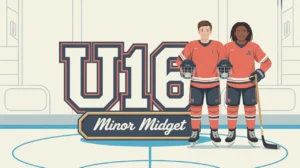Jim’s Intro to Transition
Hi folks, Jim here, the only commentator who confused transition in ice hockey with the cross country railway system.
What is transition?
Transition is the phase of play that happens when a team gains or loses the puck and shifts roles between offense and defense. It’s one of the most dynamic aspects of hockey. Smooth transitions allow teams to capitalize on turnovers, create odd-man rushes, and catch opponents off guard. Poor transitions, on the other hand, lead to giveaways and defensive chaos.
How does it work?
Transition involves quick recognition, positioning, and execution:
- Turnovers: Recognizing when the puck changes hands triggers the transition phase.
- Quick First Passes: Defensemen and forwards work together to move the puck up ice efficiently after regaining control.
- Support Lanes: Teammates fill lanes to provide passing options or defensive coverage.
- Gap Control: Defenders react instantly to prevent counterattacks when possession is lost.
- Neutral Zone Speed: Successful transitions often happen through quick, direct plays in the neutral zone.
- Communication: Clear signals help teammates shift responsibilities smoothly.
How do you make good decisions with it?
- React Fast but Think Smart: Don’t panic on turnovers. Make that first pass count.
- Support the Puck: Whether gaining or losing it, move to give your teammate an easy option.
- Recognize Numbers: Identify odd-man rush opportunities or when to slow things down.
- Stay Organized: Avoid bunching up during quick shifts. Structure beats chaos.
- Manage Risk: A risky stretch pass can work, but know when a regroup is better.
How do you master it?
Mastering transition is about speed, structure, and anticipation. Teams drill quick breakout patterns, neutral zone counters, and recovery systems. Players develop the ability to read the play instantly, adjust positioning, and execute under pressure. The best teams turn turnovers into dangerous rushes in seconds.
What does it look like when done right?
A perfect transition looks seamless and sudden. One turnover, one clean pass, and suddenly a 2-on-1 is flying the other way. On defense, strong transitions shut down rushes before they even develop.
Commentator’s Corner
Jim’s Take
Transition is where games swing. One sharp play turns defense into offense faster than I can say “line change.”
Parent Tip
Teach players to think one step ahead. Transition is all about anticipating what happens next.
Player Tip
Keep your feet moving and your eyes up. Quick reactions and smart positioning make transitions lethal.
A Final Thought
Transition hockey rewards teams that combine quick thinking with crisp execution. Nail this phase, and you dictate the game’s momentum.









